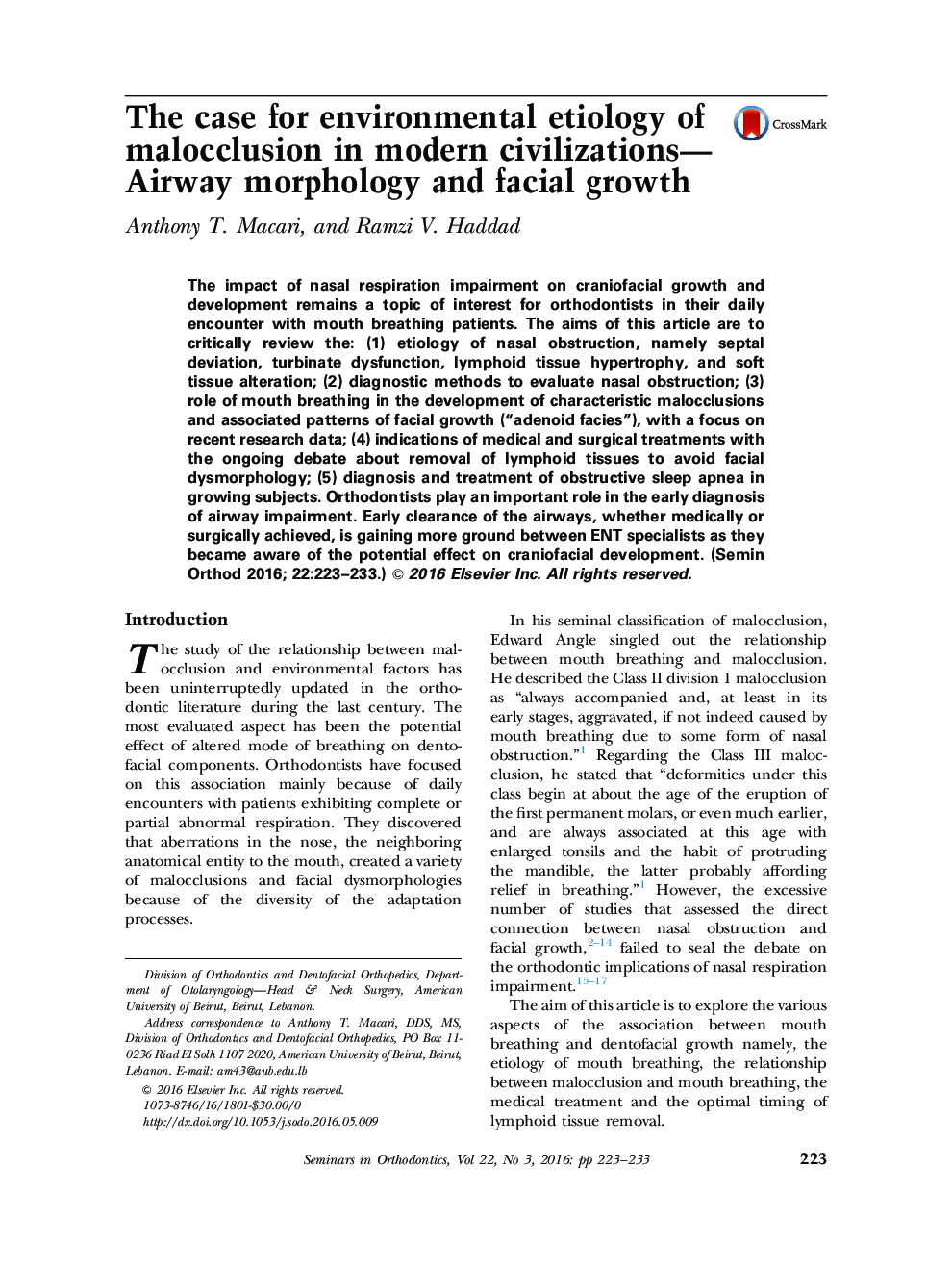| Article ID | Journal | Published Year | Pages | File Type |
|---|---|---|---|---|
| 3175300 | Seminars in Orthodontics | 2016 | 11 Pages |
The impact of nasal respiration impairment on craniofacial growth and development remains a topic of interest for orthodontists in their daily encounter with mouth breathing patients. The aims of this article are to critically review the: (1) etiology of nasal obstruction, namely septal deviation, turbinate dysfunction, lymphoid tissue hypertrophy, and soft tissue alteration; (2) diagnostic methods to evaluate nasal obstruction; (3) role of mouth breathing in the development of characteristic malocclusions and associated patterns of facial growth (“adenoid facies”), with a focus on recent research data; (4) indications of medical and surgical treatments with the ongoing debate about removal of lymphoid tissues to avoid facial dysmorphology; (5) diagnosis and treatment of obstructive sleep apnea in growing subjects. Orthodontists play an important role in the early diagnosis of airway impairment. Early clearance of the airways, whether medically or surgically achieved, is gaining more ground between ENT specialists as they became aware of the potential effect on craniofacial development.
